- Your cart is empty
- Continue Shopping
MMPC-011 Social Processes and Behavioural Issues Solved Assignment 2025
₹40.00
MMPC-011 Social Processes and Behavioural Issues
Solved Assignment 2025
Course Code : MMPC-011
Course Title : Social Processes and Behavioural Issues
Assignment Code : MMPC-011/TMA/JAN/2025
Coverage : All Blocks
MMPC-011 Social Processes and Behavioural Issues Solved Assignment 2025
Course Code : MMPC-011
Course Title : Social Processes and Behavioural Issues
Assignment Code : MMPC-011/TMA/JAN/2025
Coverage : All Blocks
| Title Name | MMPC-011 Solved Assignment 2025 |
| University | IGNOU |
| Service Type | Solved Assignment (Soft copy/PDF) |
| Course | MBA and MBA (Banking & Finance) |
| Language | ENGLISH |
| Semester | 2025 Course: MBA |
| Session | January 2025 and July 2025 sessions |
| Short Name | MMPC-011 |
| Assignment Code | MMPC-011/TMA/JAN/2025 |
| Product | Assignment of MBA and MBA (Banking & Finance) 2025 (IGNOU) |
| Submission Date | Last date of submission for Jan Session is 30th April and for July Session is 31st October. |
Assignment Brief:
Case Study Analysis and Application of OB Theories in Reliance Industries
Read the following case study carefully.
Reliance Industries: Navigating Organizational Dynamics in a Conglomerate
Reliance Industries Limited (RIL) is one of India’s largest conglomerates with diversified
businesses including petrochemicals, refining, oil, telecommunications (Jio), and retail.
Under the leadership of Mukesh Ambani, RIL has seen exponential growth and has
become a global player. However, the company faces various organizational behavior
challenges such as managing a large and diverse workforce, fostering innovation,
maintaining employee engagement, and handling the complexities of rapid growth and
diversification. The HR and leadership teams at RIL are continuously working to address
these challenges by implementing various OB strategies and practices.
Questions:
a. Organizational Culture:
i. Describe the organizational culture at Reliance Industries. How does this culture
support or hinder the company’s objectives?
ii. Provide examples of cultural practices at RIL that illustrate its values, norms, and
beliefs.
iii. Analyze the impact of organizational culture on employee behavior and company
performance.
b. Leadership and Management:
i. Examine the leadership style of Mukesh Ambani and other top leaders at RIL.
How do their leadership styles influence the company’s culture and employee
behavior?
ii. Discuss the role of transformational and transactional leadership at RIL. Provide
examples of how these leadership styles are manifested in the company’s
management practices.
c. Motivation and Employee Engagement:
i. Identify the key factors that contribute to employee motivation and engagement at
Reliance Industries. How does the company address these factors?
ii. Apply two motivation theories (e.g., Maslow’s Hierarchy of Needs, Herzberg’s
Two-Factor Theory, McClelland’s Theory of Needs) to analyze how RIL
motivates its employees. Provide specific examples from the company.
d. Communication and Team Dynamics:
i. Analyze the communication channels and practices at Reliance Industries. How
effective are they in ensuring efficient information flow and collaboration?
ii. Discuss the dynamics of team collaboration within RIL. How does the company
manage conflicts and promote teamwork? Provide examples of successful team
projects and initiatives.
2. Application of OB Theories:
i. Select two organizational behavior theories and explain how they can be applied
to address the OB challenges at Reliance Industries.
ii. Discuss how these theories can help in developing effective organizational
strategies and practices for the company.
3. Conclusion:
i. Summarize the key findings from your analysis.
ii. Provide actionable recommendations for Reliance Industries to enhance its
organizational behavior practices and support its growth.
Format:
• Your analysis should be 3,000 to 4,000 words in length.
• Use headings and subheadings to organize your content.
Evaluation Criteria:
• Demonstration of understanding of OB concepts and practices.
• Application of theories to the company’s context.
• Quality and depth of analysis.
• Clarity of communication and organization of content.
Note: You are encouraged to use additional resources and real-world examples to support your
analysis. Critical thinking and originality will be highly valued in your responses.
Grading Rubric:
Criterion (A) (B) (C) (D) (F)
Understanding
of OB Concepts
Demonstrates
thorough
understanding
with clear,
detailed
examples from
the case study.
Demonstrates
good
understanding
with relevant
examples.
Demonstrates
basic
understanding
with some
examples.
Shows limited
understanding
with few or no
examples.
Lacks
understanding
and does not
provide
relevant
examples.
Application of
OB Theories
Skillfully
applies
theories to case
study with
deep insight
and relevance.
Applies
theories well
with good
relevance.
Applies
theories with
some
relevance.
Limited
application of
theories with
minimal
relevance.
Fails to apply
theories or
does so
inaccurately.
Analysis of
Company
Practices
Provides
insightful and
well-supported
analysis of
company
practices with
strong
evidence.
Provides a
well-supported
analysis with
good evidence.
Provides a
basic analysis
with some
supporting
evidence.
Provides a
weak analysis
with little
supporting
evidence.
Fails to
analyze or
provides an
inaccurate
analysis.
Recommendati
ons for
Improvement
Proposes
highly
effective and
relevant
recommendati
ons with clear,
relevant
application to
the company.
Proposes
effective
recommendati
ons with good
application.
Proposes
recommendati
ons with some
relevance and
application.
Proposes
recommendati
ons with
limited
relevance and
application.
Fails to
propose
appropriate
recommendati
ons or does so
inaccurately.
Communication
and
Organization
Exceptionally
clear, wellorganized, and
engaging
writing with no
errors.
Clear and wellorganized
writing with
minimal errors.
Satisfactory
writing with
some
organization
and few errors.
Poorly
organized
writing with
several errors.
Unclear and
disorganized
writing with
many errors
MMPC 011, MMPC011, MMPC-011, MMPC-11, MMPC11, MMPC 11


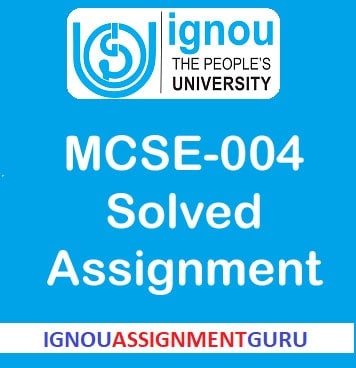
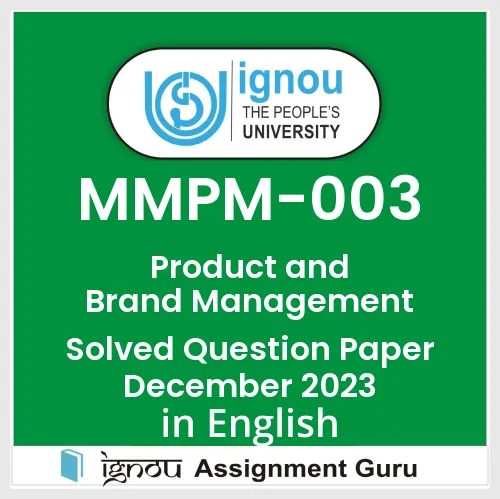



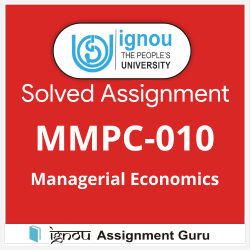
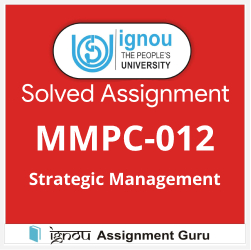


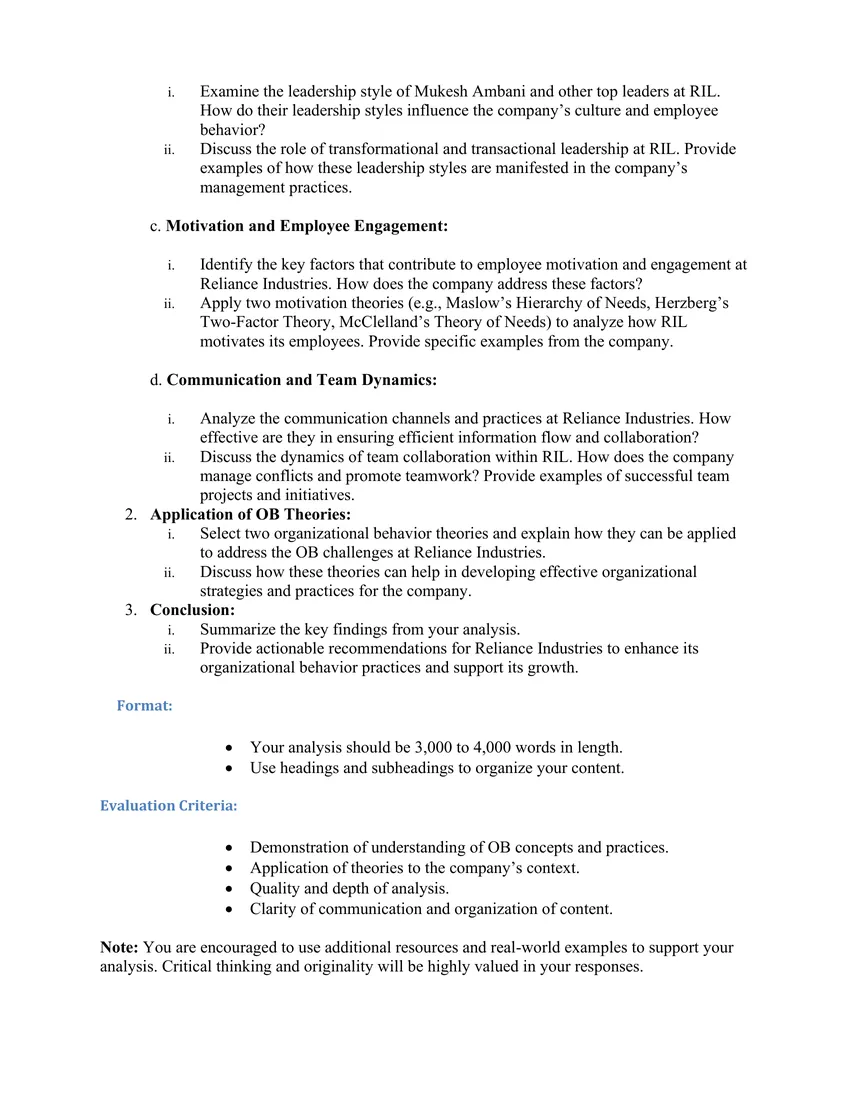
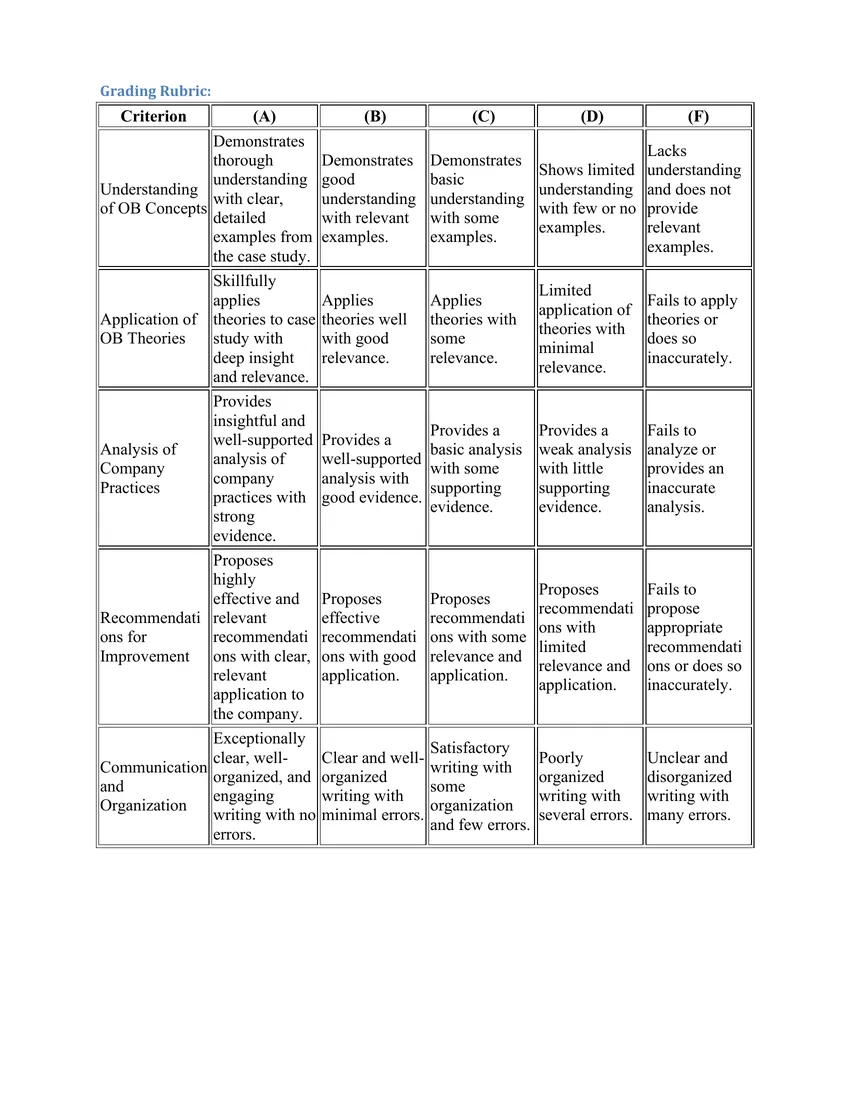
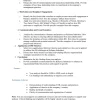
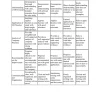
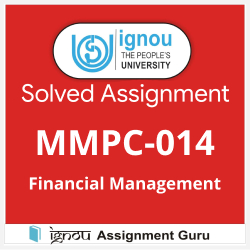


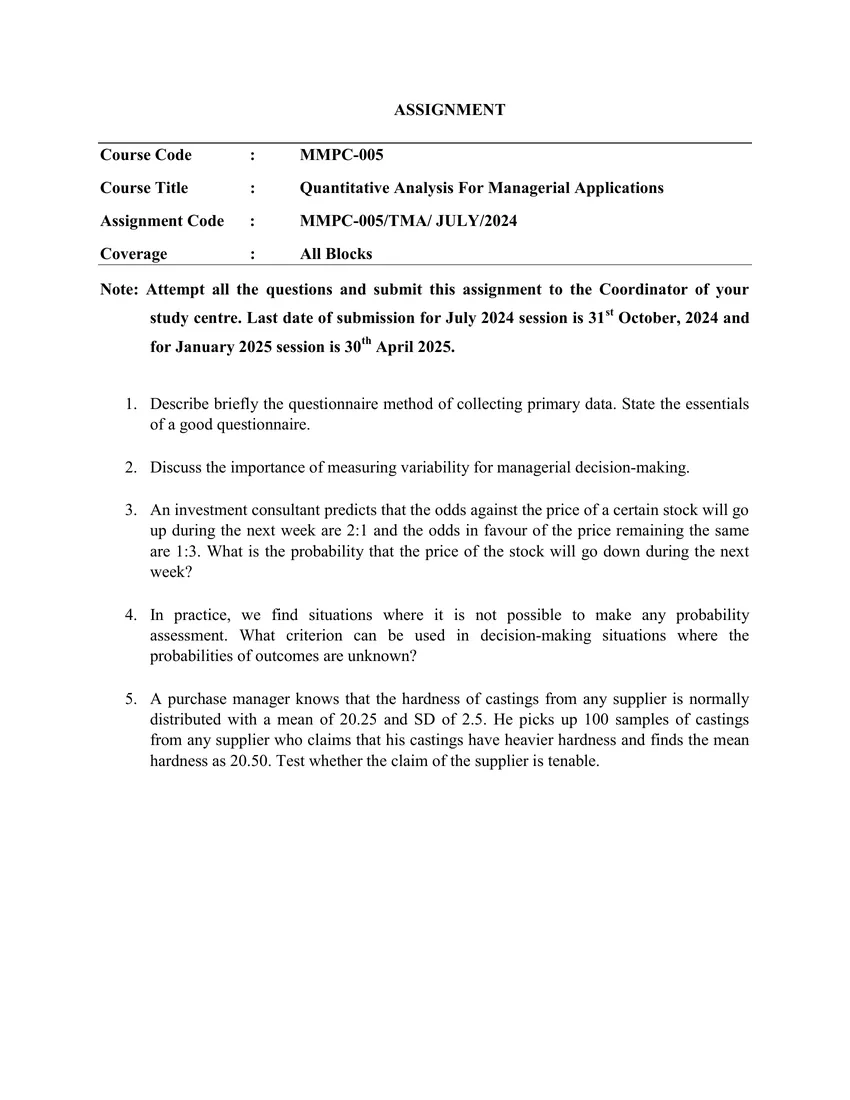
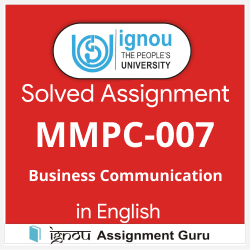
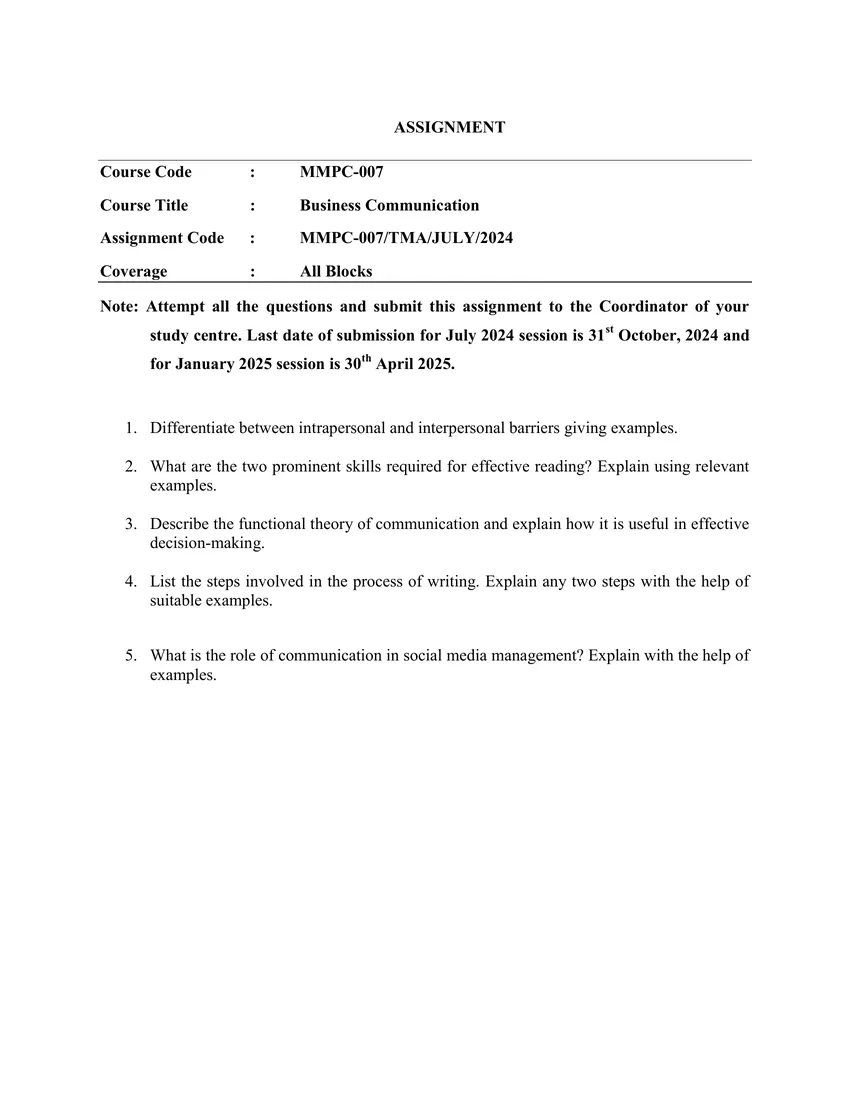
Reviews
There are no reviews yet.